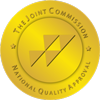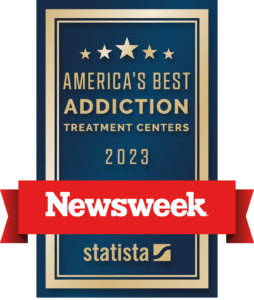Every year, as the calendar turns to October, the focus is usually on fall festivities, but this year, there’s something more menacing that people should be aware of. The news, local law enforcement, and even the DEA (Drug Enforcement Administration) is warning parents about a new pattern among drug dealers, known as “rainbow fentanyl.” These are brightly colored pills that resemble candies laced with the deadly drug.
Fentanyl is the deadly cause of most opioid overdoses in Missouri and across the United States because it’s 50 times stronger than heroin and 100 times more potent than morphine.
Candy drug is commonly disguised as prescription medications or other illegal substances, so someone who buys them won’t even realize there is fentanyl in it, sadly, oftentimes before it’s too late.
Today, everyone, especially parents, is being warned to be vigilant when it comes to any drugs and/or candy purchased on the street. This is thanks in large part to the newest fad, which is selling drugs that are likely to have a high potential to contain fentanyl. Rainbow fentanyl is little colored pills that resemble mini Sweet Tarts, coining the term “candy drug.”
DEA Warns of Brightly-Colored Fentanyl Used to Target Young Americans
 If you have watched your local or national news as of late, you have probably seen a story on something called candy drug, known as “rainbow fentanyl.” It’s the newest way that fentanyl is making its way into the country and our local communities. The reason why this particular drug outbreak is getting so much attention is because of how it looks to the naked eye.
If you have watched your local or national news as of late, you have probably seen a story on something called candy drug, known as “rainbow fentanyl.” It’s the newest way that fentanyl is making its way into the country and our local communities. The reason why this particular drug outbreak is getting so much attention is because of how it looks to the naked eye.
To the untrained eye, these rainbow fentanyl pills look very similar to candy. They might resemble popular candies such as Smarties or Sweet Tarts.
The DEA has already seized “candy drug” pills in over 18 states since August but is still warning parents and children to be on the lookout for this.
In regards to rainbow fentanyl, the DEA released the following statement on its website:
“Rainbow fentanyl is a drug that comes in pill and powder form, and a variety of bright colors, shapes, and sizes. It is a deliberate effort by drug traffickers to drive addiction among kids and young adults. The men and women of the DEA are relentlessly working to stop the trafficking of rainbow fentanyl and defeat the Mexican drug cartels that are responsible for the vast majority of the fentanyl that is being trafficked in the United States.”
Fentanyl Remains the Deadliest Drug Threat Facing This Country
The U.S. Centers for Disease Control and Prevention estimates that 107,622 Americans overdosed and died in 2021, with 66% of those deaths related to synthetic opioids like fentanyl. Drug poisoning is the leading cause of death for Americans between the ages of 18 and 45.
Below are some other facts and statistics as it pertains to fentanyl from the National Center for Drug Abuse Statistics:
- 1 kilogram of fentanyl contains 250,000 lethal doses
- Less than .007% of an ounce of fentanyl can lead to overdose and death
- From 2012 to 2018, fentanyl-related overdoses increased from 2,600 to over 31,000
- The majority of fentanyl-related deaths in the US occur in Missouri, Michigan, Illinois, Delaware, Maryland, New Jersey, and Pennsylvania
All this talk about fentanyl, and you might be thinking to yourself, “Why is everyone freaking out?” Well, fentanyl isn’t just a highly addictive drug, as you can see from some of the statistics above, it is also highly dangerous.
As mentioned before, fentanyl is a synthetic opioid that is 100 times more powerful than morphine and 50 times more powerful than heroin. All that is needed to be a fatal dose is as little as the equivalence of 10 to 15 grains of table salt. What makes fentanyl so dangerous is that, since it is synthetic, there is no way of knowing how much fentanyl is in a pill without testing it in a lab first.
Fentanyl is particularly problematic not just in Kansas City, but throughout Missouri. From 2019 to 2020 the state of Missouri saw a 19% increase in the number of overdose deaths, with the majority being caused by opioids such as fentanyl. In fact, of the 1,878 overdose deaths in 2020, 1,204 of them were the result of a fentanyl overdose.
Fentanyl is often manufactured and sold as a standalone drug but is also used with other drugs such as cocaine and heroin, making those drugs cheaper to produce.
When mixed with other drugs, usually unknowingly, fentanyl can be even more dangerous and possibly even fatal.
This is incredibly concerning because we know that the drugs are being dyed bright colors in the hopes of getting more young people to try them and become addicted to opioids. Fentanyl, rainbow or not, is deadly.
Fentanyl is a fast-acting drug, and it leaves the body quickly, typically staying in your system for 72 hours or less. Some common symptoms and side effects of taking fentanyl include:
- Vision changes
- Weight loss
- Having trouble urinating
- Drowsiness
- Stomach pain
- Anxiety
- Depression
- Changes in sleep patterns
- Weird dreams
- Dry mouth
- Reddening or flushing of the skin
- Uncontrollable shaking
- Chest pain
- Swelling of the hands, feet, arms, or legs
With the DEA warning about rainbow fentanyl that looks like candy, it is important to know and be able to properly identify the possible warning signs of a fentanyl overdose.
Some possible signs of a fentanyl overdose include:
- Slowed breathing
- Chest pain
- Seizures
- Stiffening of the body
- Confusion
- Acting strange
- Blue lips
- Passing out
If you or someone you know is experiencing a fentanyl overdose, call 911 right away. First responders will likely be able to administer naloxone, also known as Narcan, to help reverse some of the overdose symptoms.
You can also administer Narcan on your own if you have it with you. Narcan can be purchased from a pharmacy without a prescription.
Unless a drug is prescribed by a licensed medical professional and dispensed by a legitimate pharmacy, you don’t know if it’s fake or legitimate.
If your child is of an age where they go out on their own or with friends, make sure to talk to them about the possibility of tainted or laced drugs that may look like candy. Talk to them about what to look out for and tell them not to take anything that is not wrapped or appears to be tampered with.
If your child shows any signs of a possible fentanyl overdose, or even if they begin to show signs or symptoms of it being in their system, call 911 immediately.
How Sana Lake Recovery Can Help Break the Cycle of Addiction
 If you or someone you know is struggling with opioid or fentanyl addiction, it’s important to get them help before it’s too late. At Sana Lake, we are here to help break the cycle of addiction every step of the way.
If you or someone you know is struggling with opioid or fentanyl addiction, it’s important to get them help before it’s too late. At Sana Lake, we are here to help break the cycle of addiction every step of the way.
Medical Detox
Once you have decided to enter into treatment, the first step is to go through detox. The detox process is done to rid the body of any harmful substances so that the brain and body can begin to heal.
Due to medical detox and the withdrawal symptoms associated with it, it is important to undergo the detox process under the care and supervision of trained medical professionals, such as the ones we have here at Sana Lake Recovery Center.
Treatment for Fentanyl Addiction
Once detox has been completed, the next step is to enter into a treatment program. At Sana Lake, we offer inpatient, outpatient, and partial hospitalization programs.
Depending on the severity of the addiction and what works best for you and your needs, your treatment professional will recommend and create a treatment plan that’s best for you.
Treatment centers are mostly centered around various therapy sessions, including individual and group therapy. Those who enter inpatient treatment will also have access to additional services not available to those in outpatient treatment.
Do You Want To Know More About the Candy Drug Known as Rainbow Fentanyl?
The last thing you should have to worry about as a parent is the safety of your child. As the DEA warned, be sure to keep a close eye on things and start a dialogue with them about drug use and the dangers of candy drug, aka fentanyl.
If you or someone you know has experienced a fentanyl-related issue, contact us today. We can help before it’s too late!



